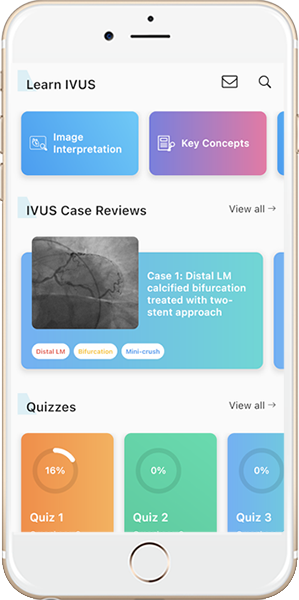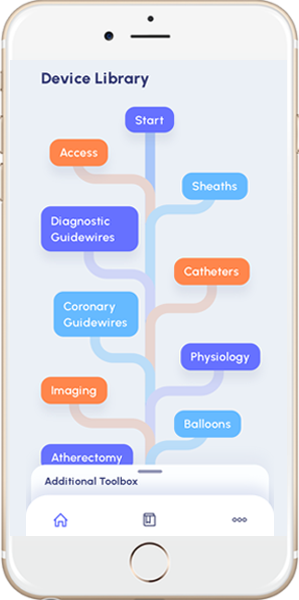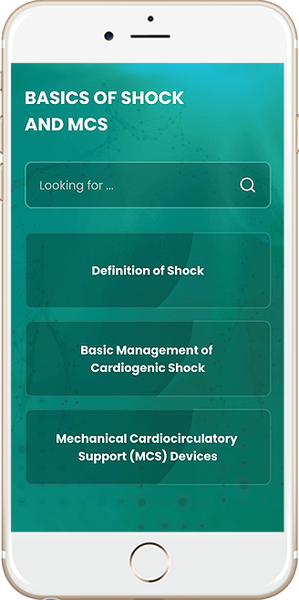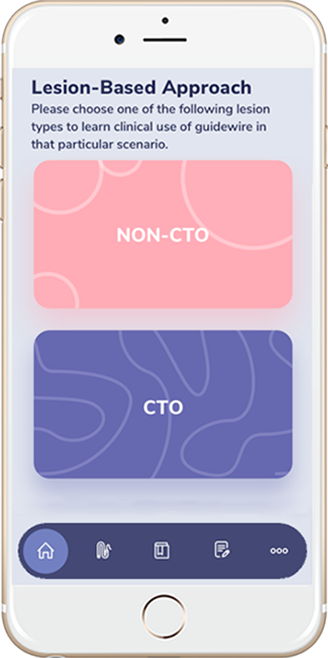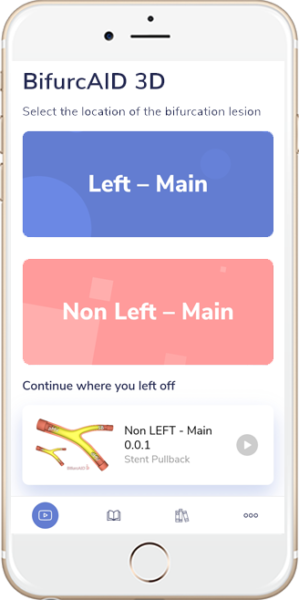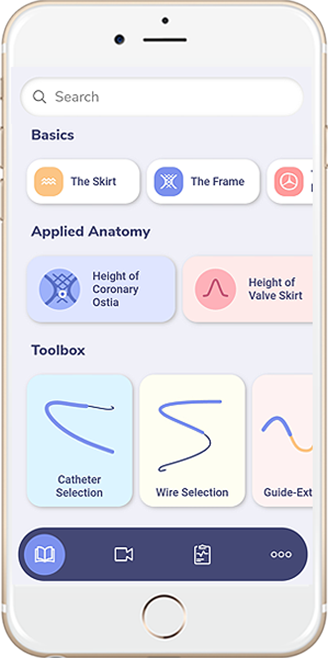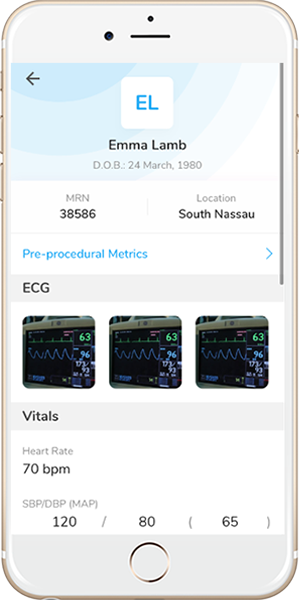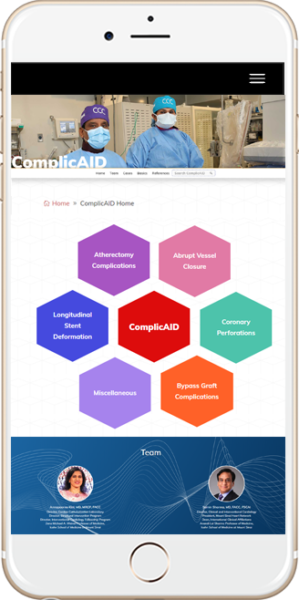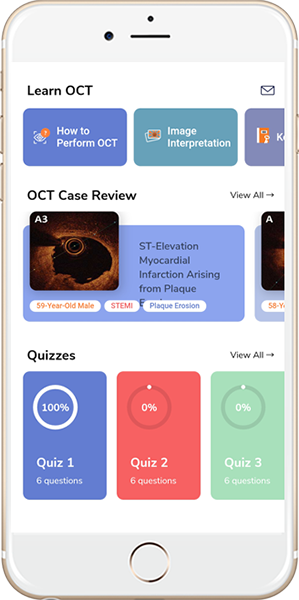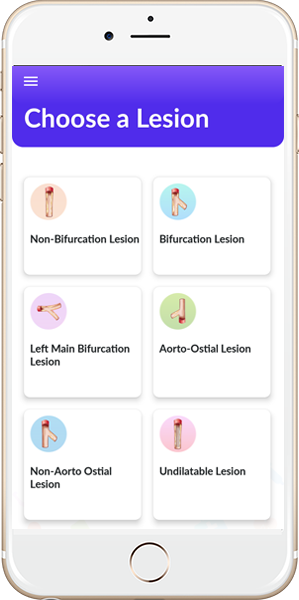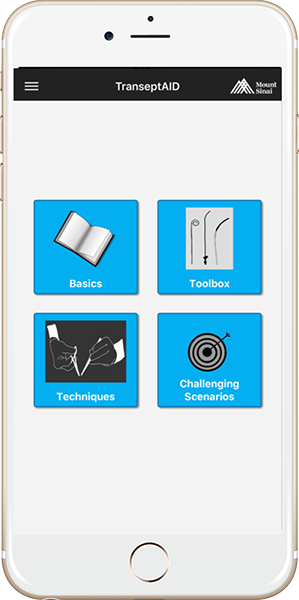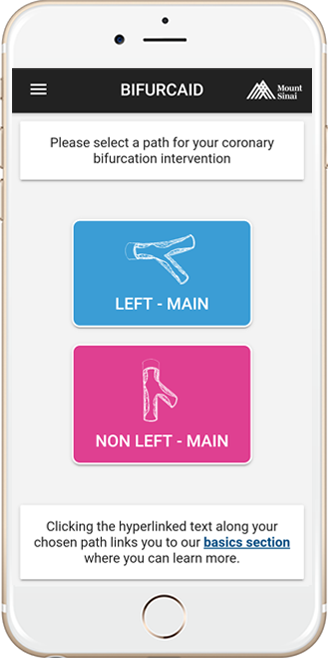
GuidewireAID
- Home
- GuidewireAID Home
Swipe ⇄ Right – Left
a
M
Simple/Uncomplicated Lesion
- To treat simple, concentric stenosis of the artery, the vital element of the wire is safety.
- As these wires are not required to go through difficulty or extreme anatomies, unique properties are not required.
- The wire should have an atraumatic tip, good torquability, and favorable trackability with a spring coiled nitinol wire.
M
Tortuous Vessel
- In dealing with tortuous anatomy, the workhorse wires aren't designed to tackle this challenging lesion and often fail to navigate through the lesion.
- The presence of wire's flexibility, lubricity, and excellent trackability is essential to tackle these challenging anatomy.
- The optimal wire should have a soft tip, polymer/hydrophilic cover, moderate support, or a hybrid type with a hydrophilic body and hydrophobic distal tip.
M
Calcified Lesion
- Two distinct components are involved in a calcific lesion wiring:
- crossing the lesion
- delivering the devices
- The ideal wire to cross a heavy calcified lesion should have a soft tip with polymer/hydrophilic cover or a hybrid type of wire (hydrophobic tip and hydrophilic body).
- To deliver PCI devices through calcified lesion, the wire's crucial characteristics include high support, good tactile feedback, and excellent torquability/trackability for device delivery in a calcified lesion.
-
Crossing the lesion:
- Runthrough
- Fielder
- Whisper
- Pilot 50
-
Delivering the devices:
- Iron Man
- Mailman
- Hi-Torque Balance HeavyWeight
- Hi-Torque All-Star
- CHOICE Extra Support with the buddy wire technique
M
Bifurcation Lesion
- The guidewire properties to tackle the lesion should include slipperiness, excellent trackability, and slightly stronger tip load. It is paramount not to choose those with a higher risk of wire retrieval damage (e.g., non-polymer-coated wires) as the wire might be jailed during the procedure.
- Occasionally, aggressive wire with more tip stiffness along with a microcatheter may be required to enter the side branch in a challenging case.
-
Workhorse wire (main branch)
- Runthrough
- BMW
- CHOICE Floppy
-
Challenging case (side branch)
- Gaia 2
- MiracleBros 3
along with microcatheter
M
Thrombotic Occlusion
- In a setting of an acute thrombotic lesion, the wire shouldn't have significant resistance while traversing a lesion.
- The main objective is to cross the occlusion and advance the wire to the distal lumen softly and atraumatically.
- A soft wire would be the choice rather than a stiffer one with the hydrophilic or coated property. The operator can use any workhorse wire in this situation.
- In subacute occlusions, the thrombus material could have become more organized and may require a stiffer tip and higher tip load to facilitate in crossing the lesion.
M
Angulated Lesion
- The wire properties to navigate the angulated lesion is torquability, trackability, and wire flexibility. The ideal wire would be a soft tip with polymer jacket and hydrophilic cover.
- However, we may require stiffer tip with hydrophobic coating at the tip to have a better tactile feedback with torquability.
- Sometimes, we may require additional devices to navigate an angulated lesion or when re-crossing a jailed side branch.
-
Better tactile feedback with torquability:
- MiracleBros
- Provia
-
Additional devices:
- Angulated microcatheter
- Dual lumen catheter
Swipe ⇄ Right – Left
a
M
Workhorse Wires
- Safety
- 1:1 torque
- Moderate support
- Excellent tip shape retention
- Durable/resist tip breakage
M
Extra Support
- Provide more support for tortuous anatomy & distal lesions
- Does not spring back
- Soft gentle tip
M
Frontline Finesse
- 1:1 torque
- Excellent trackability through tortuosity
- Single core
- Moderate support
- Low frequency of perforation
- Avoid subintimal passage
- Lubricity with tactile feedback
M
Specialty
- Variety of tip stiffness and/or tip tapers for excellent crossability
- Tip shape retention
- Moderate support
- Low frequency of perforation
- Confianza Pro 9-12
- Fielder FC, XT-A, XT-R
- GAIA/GAIA Next
- Gladius Mongo
- Hi-Torque Cross-IT 100 XT
- Hi-Torque Pilot 150, 200
- Hi-Torque Progress 40/200
- Hornet 10, 14
- Miraclebros 3-12
- RG3, R350
- SION and SION Black
Swipe ⇄ Right – Left
a
M
AWE Stepwise Approach
- Fielder (Non tapered polymer jacket tip), Fielder XT/XT-A/XT-R (Tapered polymer jacket tip)
- MiracleBros (Open Coil, Straight tip, high tip stiffness > facilitate for drilling and can create the curve) OR Gaia 3 (Tapered, hydrophilic coating, composite core with 1:1 torque, high tip stiffness)
- Confianza 9/12 (Tapered, hydrophilic coating, high tip stiffness)
M
Wires for Microchannel Tracking
- Fielder, Fielder XT, Fielder XT-A
- Gaia 1, Gaia 2
- High torque Pilot 50/150
M
Wires for Crossing Proximal Cap
- Fielder, Fielder XT/XT-A/XT-R (find microchannel)
- Gaia 2, Gaia 3
- MiracleBros 3, 4.5, 6
- Confianza Pro
M
If the vessel course is ambiguous:
Wires for Drilling
If the vessel course is ambiguous:
M
Wires for Navigating Through the Vessel
M
Wires for Distal Cap Crossing
- Confianza Pro 12 (calcified distal cap)
- Progress 200T
- Hornet 14
- Astato 20, 40
Swipe ⇄ Right – Left
a
M
Wires for Collateral/Septal Branches
M
Wires for Cap Penetration
M
Wires for Externalization
Team
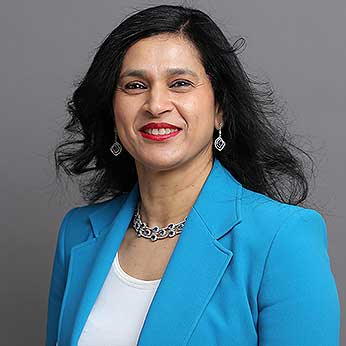
Annapoorna Kini, MD, MRCP, FACC
Director, Cardiac Catheterization Laboratory
System Director, Structural Heart Disease Program
Director, Interventional Cardiology Fellowship Program
Zena and Michael A. Wiener Professor of Medicine
Icahn School of Medicine at Mount Sinai
System Director, Structural Heart Disease Program
Director, Interventional Cardiology Fellowship Program
Zena and Michael A. Wiener Professor of Medicine
Icahn School of Medicine at Mount Sinai

Samin Sharma, MD, FACC, FSCAI
Director, Clinical and Interventional Cardiology
President, Mount Sinai Heart Network
Dean, International Clinical Affiliations
Anandi Lal Sharma Professor of Medicine
Icahn School of Medicine at Mount Sinai

Htoo Kyaw, MD
Interventional Cardiology Fellow
Icahn School of Medicine at Mount Sinai
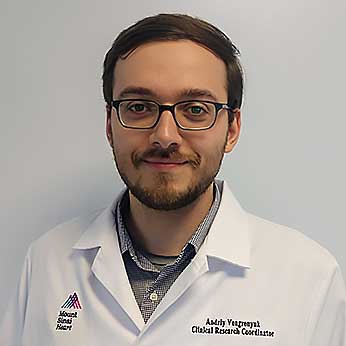
Andrew Vengrenyuk, MS
Associate Research Coordinator
Icahn School of Medicine at Mount Sinai
Icahn School of Medicine at Mount Sinai
The development of this app was made possible by the generous support of


